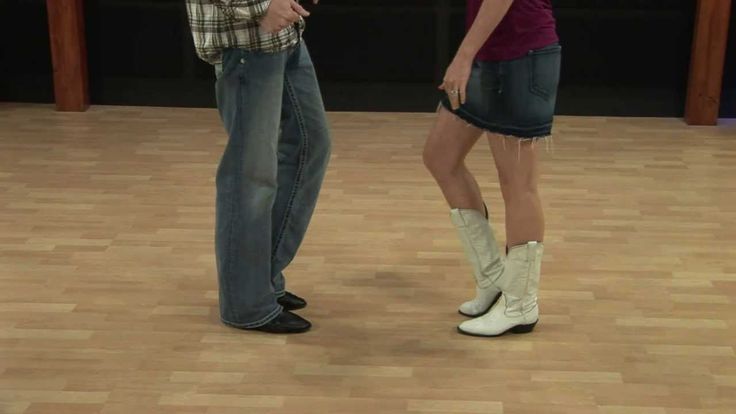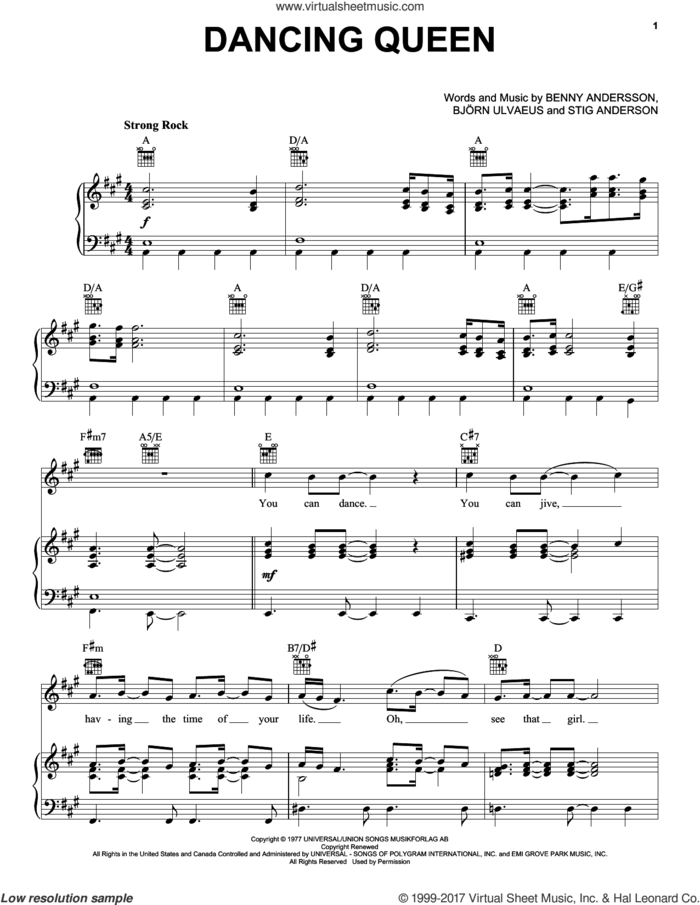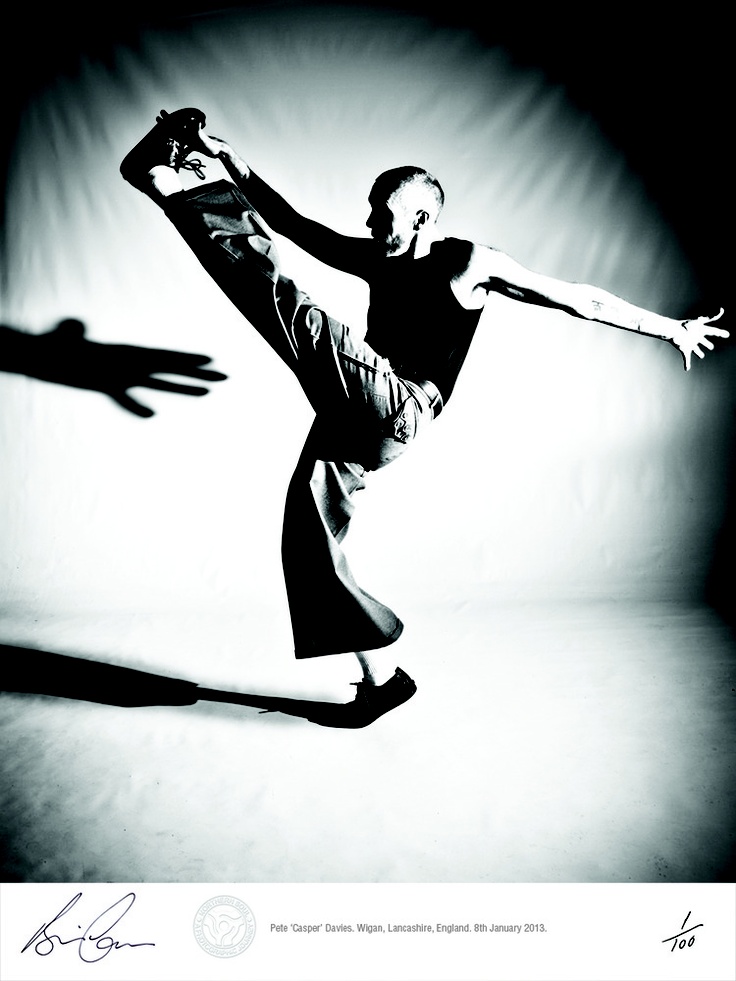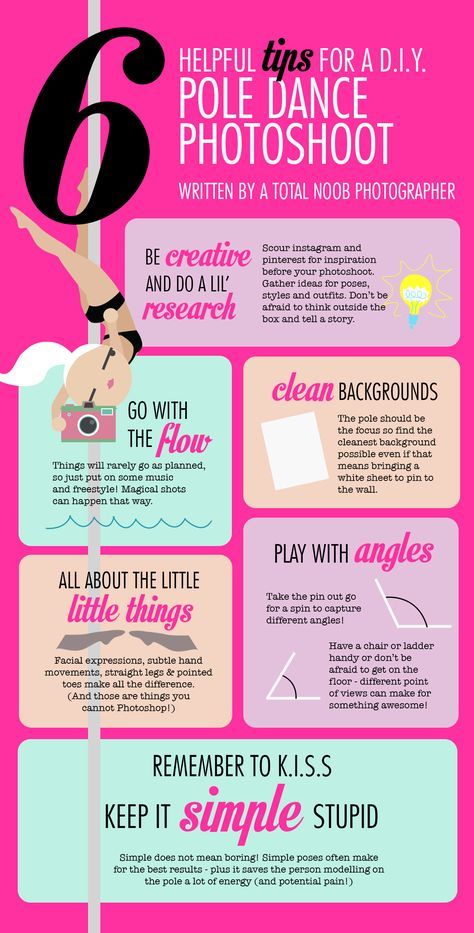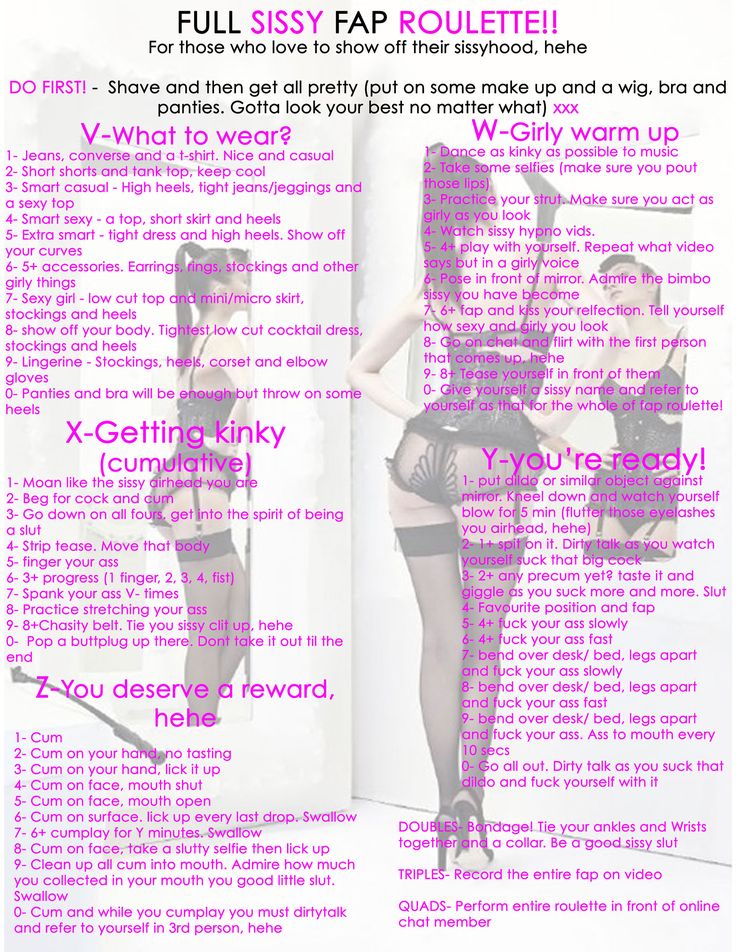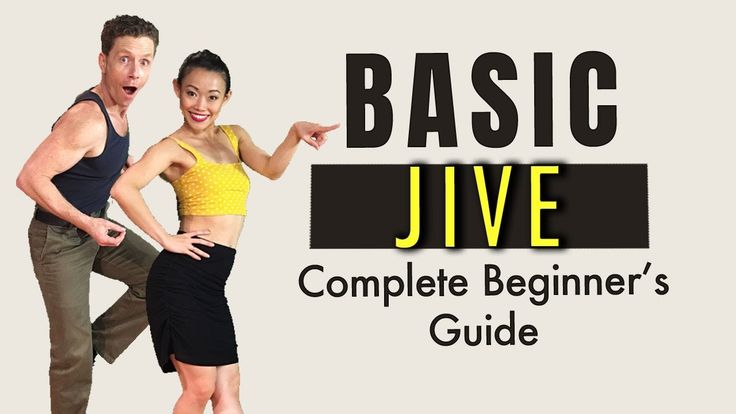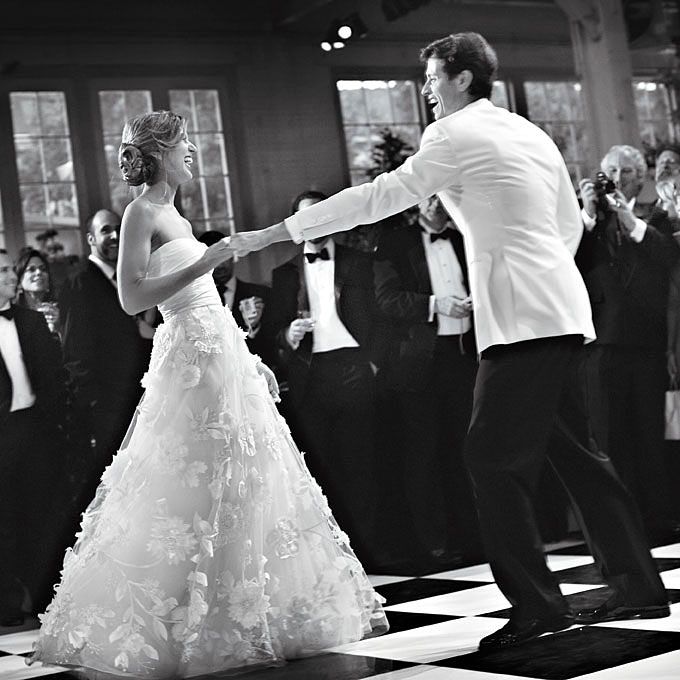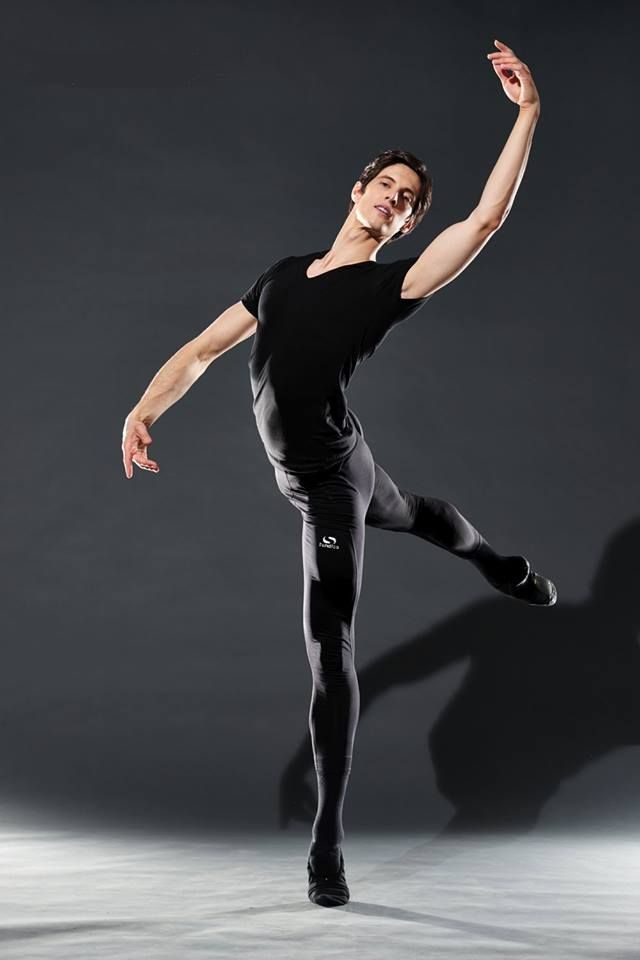How do white people dance
Why White Men Can’t Dance, According To Science
True or not, there is clear societal bias: Straight white men can’t dance. But it wasn’t always like this, according to Maxine Craig, Ph.D., a professor of sociology at the University of California, Davis. In the early 20th century, dancing was an important part of nightlife for most young Americans.
“Dancing was acceptable in the swing era because the kind of dancing had very, very clear gender roles,” says Craig, author of Sorry I Don’t Dance: Why Men Refuse to Move. “It’s basically about men throwing women.”
After the war, women were sent home from the factories and told to have babies, and men became increasingly wary of displaying less-than-masculine traits. Dancing fell to the wayside. “Performing gender is not only doing certain things; it’s avoiding doing other things. Dance has become one of those things in our culture,” she says.
Here, Craig shares what social pressures have continued to keep men, especially white men, off the dance floor — and how they’re missing out.
Why is dancing considered feminine?
Certain kinds of dance have long been considered feminine. In the United States, ballet has always been considered feminine. Any men who became professional dancers, whether it was ballet or another kind of dance, always had to apologize for it in some way. In the biographies of Gene Kelly and Fred Astaire, they both say they became dancers by accident.
How did World War II change dancing? What did that look like?
The wartime shook things up — women were in factories, men were off fighting. But when World War II ended, you have this McCarthy era, which was a very, very conservative time. There was this opening up of gender and sexual roles during the war, and afterwards there was this push to get back to normal with more conservative, conventional roles. They told women they should not be occupying a job that a former soldier needs. And it was a period that was more homophobic than the forties or thirties or twenties.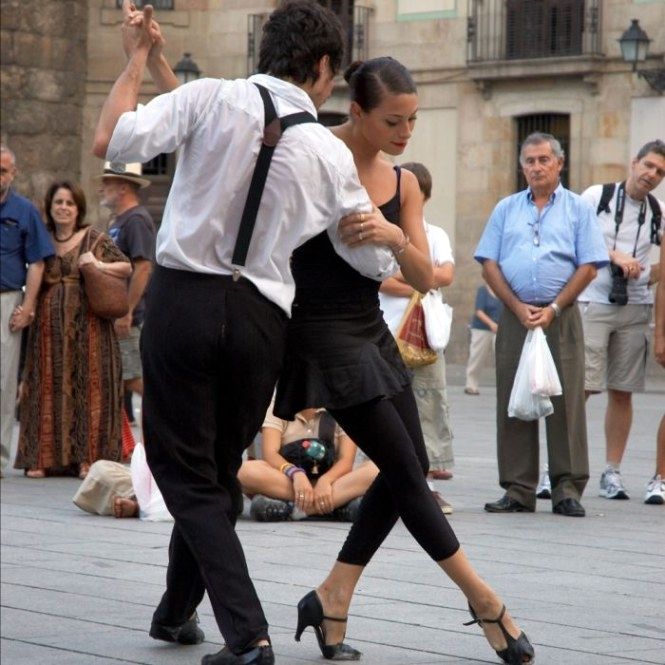 I found many court cases where two men could be arrested for obscenity for dancing together. And when the police would go to court and were asked what was the crime, they’d say, “Oh, I saw two men dancing close.”
I found many court cases where two men could be arrested for obscenity for dancing together. And when the police would go to court and were asked what was the crime, they’d say, “Oh, I saw two men dancing close.”
What were some of the other factors?
After the war, people started getting married really young and moving to the suburbs. And when I say people, I mean mostly white, middle-class people. This means people start living in more racially segregated neighborhoods, and middle-class white people start consuming more entertainment at home now because they have TVs and young kids. This is one of the many forces that kind of tilts nightlife, which dampens dancing during this homophobic period where men start to be more nervous about their performances of masculinity.
All this seems mostly specific to white men. What was happening with men of other races?
As all this was happening in the fifties and sixties, white people, Black people, and Latino people all started listening to different music.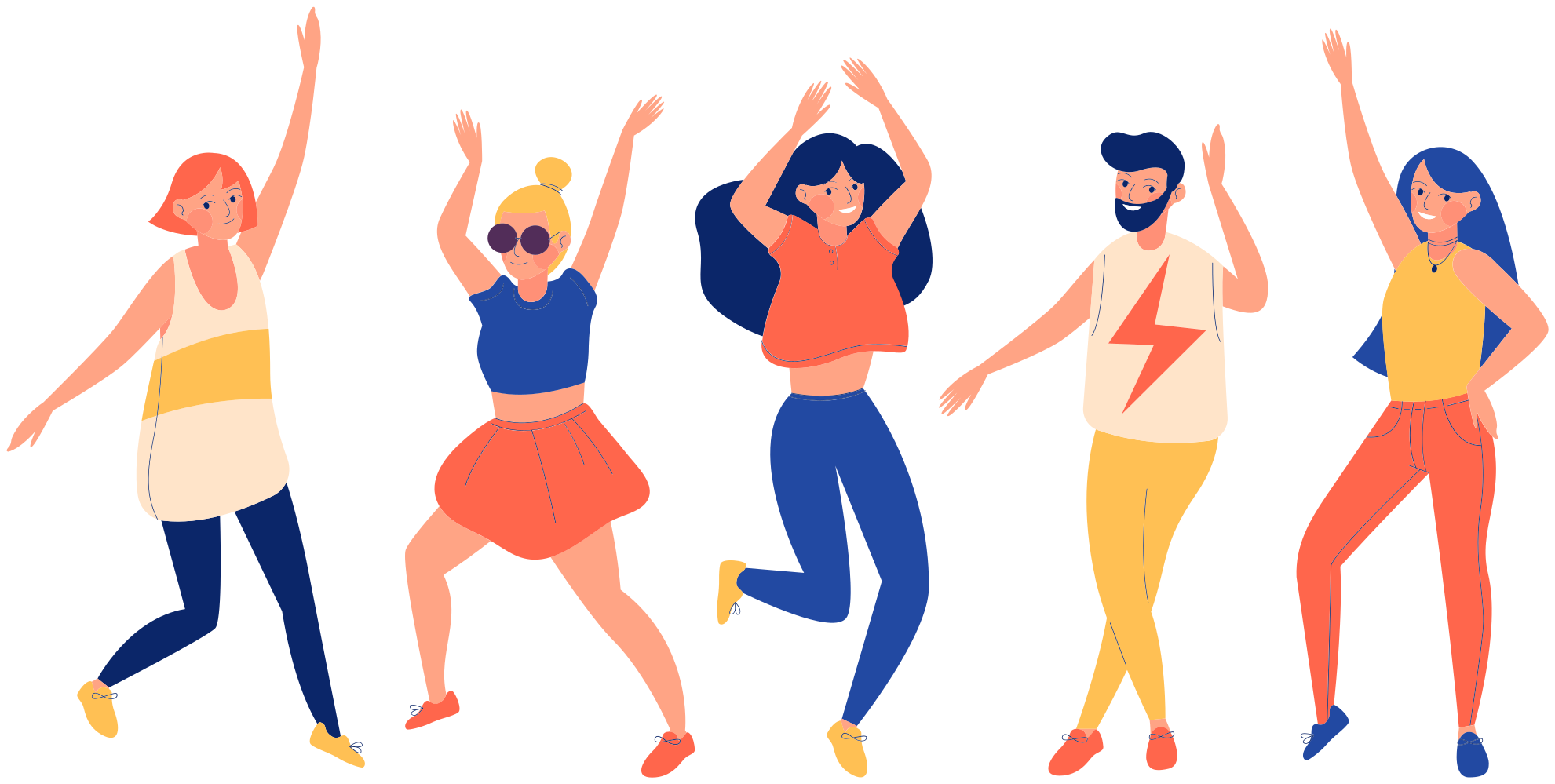 Black and Latino people continued to listen to dance music and to think that it was acceptable for both genders to dance. In fact, when white people moved to the suburbs and stopped going to those big ballrooms to dance, they turned into salsa clubs. Then radio stations also started to separate and niche-guard — before that everyone listened to a lot of the same music, but that ended. So you have all these radio stations, and some of it is clearly dance music and some of it’s not. You have mostly white men listening to music that’s not, and dance occasions become this increasingly awkward thing you get drunk or stoned to do.
Black and Latino people continued to listen to dance music and to think that it was acceptable for both genders to dance. In fact, when white people moved to the suburbs and stopped going to those big ballrooms to dance, they turned into salsa clubs. Then radio stations also started to separate and niche-guard — before that everyone listened to a lot of the same music, but that ended. So you have all these radio stations, and some of it is clearly dance music and some of it’s not. You have mostly white men listening to music that’s not, and dance occasions become this increasingly awkward thing you get drunk or stoned to do.
And then disco came along.
Oh no. What happens with disco?
What really fascinated me with the archival research and interviews I did, what really struck me, was how much guys hated disco. They had real anger toward disco, and I wondered what that was about. It was really about demanding some type of performance of masculinity that they thought was unacceptable.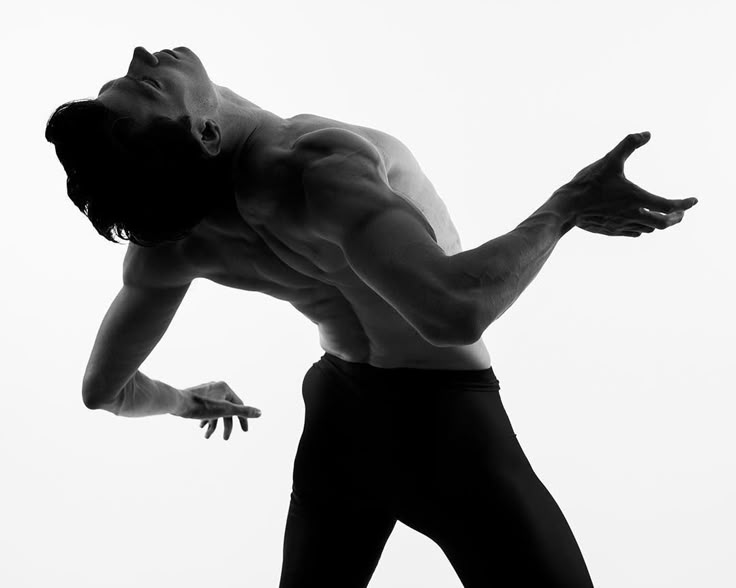 And so they despised John Travolta and they despised dressing up and despised ways of valuing masculinity that they hadn’t experienced before.
And so they despised John Travolta and they despised dressing up and despised ways of valuing masculinity that they hadn’t experienced before.
If they weren’t required to participate, why did they hate it so much?
People associate disco with Saturday Night Fever, but it really emerged from Black communities and gay communities. It was not a scene white men were ready to be comfortable in, and they rejected it. Now, all of these patterns are complicated, and none of this applies to any group 100%. But there was this “Disco Sucks” campaign at Comiskey Park where baseball fans came and burned disco albums. There was too much hostility for it to ever build up the masculine credibility that swing dancing had.
Was there any type of dancing straight white men were okay with?
There was a period in the 1960s where you go to total, no-technique dancing. Like what people would do to the Grateful Dead. Just get stoned, get out there, and be wild. And there was a certain kind of guy who could do that, but it was associated with drugs and youth and not something you would do after a certain age.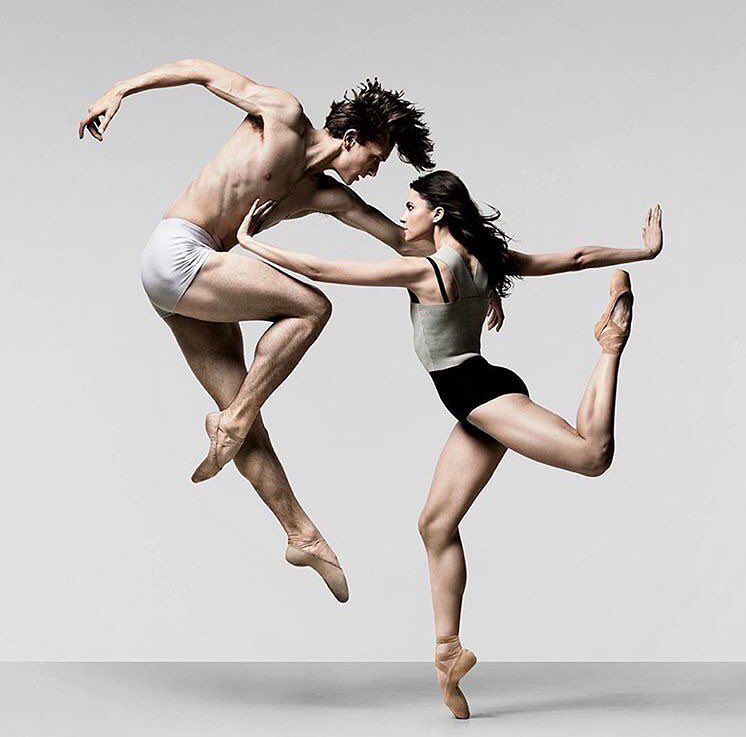
Did age play a role in any other ways?
Some men danced when they were young and dating, and now that they’re married, will never dance again — meanwhile, his wife wants to dance. People who treat dance as a form of play, and not sexual play but fun, they could dance with their sisters and with their mothers. This was more common in Latino families and Black families. Men who totally associated dancing with just touching a woman on the dance floor, they felt very embarrassed doing it. But the more people could treat it as just dancing and not sex, the more they could have fun with it. The more they thought of it as a precursor to getting someone into bed, the more likely they were to give it up once married.
So where are we now?
A form of dancing has emerged that’s very masculine and that’s hip-hop. When guys engage in it, the language around it, they’re engaging in battles, and it’s a very masculine thing. It’s athletic, it’s associated with street culture, women are the exceptions.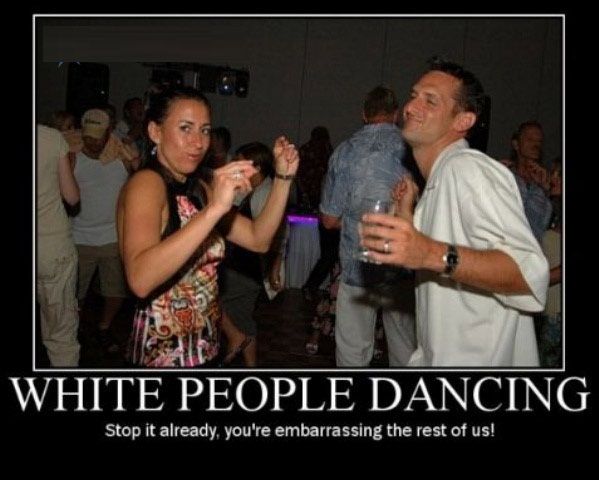 Mosh pits are the same kind of thing, but that’s more an extension of no-technique dancing. But being expressive with your body is not something boys are raised to do; they are raised to be fearful of being called gay and moving their hips and their bodies. And we’re in a moment where there’s more fluidity, but sometimes not. I think there’s still fathers who freak out when their sons want to go into ballet.
Mosh pits are the same kind of thing, but that’s more an extension of no-technique dancing. But being expressive with your body is not something boys are raised to do; they are raised to be fearful of being called gay and moving their hips and their bodies. And we’re in a moment where there’s more fluidity, but sometimes not. I think there’s still fathers who freak out when their sons want to go into ballet.
Does this short-change straight white men mostly? How might they miss out?
Dancing has kind of become a way for men to get alienated from their bodies. This man told me he loved music, and I asked what happens when he listens to it. He said it was all in his head. And when you hear a good beat and are not disconnected from your body, you’ll bounce a bit with it. Some guys are raised to really watch their bodies and makes sure they’re not moving too much. That fear of just moving is really a shame.
This article was originally published on
White People Dancing / LOL White People
66
- 381,138
- 97
- 136
[View Related Sub-entries]
- Meme
- Status
- Confirmed
- Year
- 2012
- Origin
- Tumblr
- Tags
- race, animated gif, dance, ytmnd, dancing, white people, racism, racial relations
About
White People Dancing (also known as "LOL White People") is a caption associated with image macros, GIF animations or video clips depicting people of Caucasian descent dancing in an awkward fashion. Such images often the text "white people" or "lol white people" overlaid.
Origin
Preconceptions about White people's poor sense of rhythm or dancing skills have been explored by Black stand-up comedians as early as since the 1980s with Eddie Murphy's 1987 standup show "Eddie Murphy's Raw. " In the skit, Murphy declares it as a simple fact that "white people can't dance well":
" In the skit, Murphy declares it as a simple fact that "white people can't dance well":
The comedy trope continued in the mainstream media throughout the 2000s, such as The Dave Chappell Show which frequently made light of the racial stereotype through skits. The most notable skit guest starring singer-songwriter John Mayer aired on February 4th, 2004:
In the world of stand-up comedy, the theme has been also referred to as the "White Dude, Black Dude"[2] trope.
In Internet Humor
The early rise of "white people dancing" GIFs on the web began with a short music video skit found in an episode of MTV2's Wonder Showzen titled "A Celebration of White People Throughout History," which showcased various footage of white people dancing to a catchy tune. The original clip was aired on March 11th, 2005.
The song was soon paired with a GIF animation of two cartoon characters dancing awkwardly and uploaded as a YTMND site titled "White People, Yayy!" on October 1st, 2005.
Spread
On April 15th, 2006, YTMND user spanishfli created a new site titled "LOL… White People," featuring a still image of a middle-aged man dancing wildly in a ballroom. In the following years, many more YTMND sites centered around the theme of dancing white people continued to emerge in the community.
The YTMND jokes fit into the "white people can't dance" stereotype, sometimes referred to as "white people's disease" according to the Urban Dictionary entry[1] submitted on March 29th, 2010:
The inability to maintain or play to a rhythm. To have an Awful Sense of rhythm. This term is based on two stereotypes at once, African americans have a good sense of rhythm and Caucasian people do not.
On February 17th, 2008, the single topic blog Stuff White People Like[3] also drew a similar analogy in a post titled "Standing Still at Concerts":
If you find yourself invited to a concert with a white person, do NOT expect to dance.
Prepare yourself for three hours of standing reasonably still. It is also advised to get a beer or (if legal) a cigarette so you have something to do with your hands. Although it is acceptable to occasionally raise one hand and point just above the stage.
Notable Examples
Snuggie Family Commercial
In September 2009, sleeved blanket merchandise company Snuggie released a commercial featuring a White suburban-type family flailing their arms in the air while getting cozy in Snuggies at a camp site. The image was quickly immortalized into a GIF animation with the caption "LOL White People."
Rebecca Black's Awkward Dancing Friend
In March 2010, Benni Cinkle, also known as the "awkward dancing friend" of Rebecca Black, became a subject of numerous "LOL White People" GIF animations for her awkward dancing scene in the viral music video sensation "Friday."
Search Interest
External References
[1] Urban Dictionary – white people's disease
[2] TV Tropes – White Dude, Black Dude
[3] Stuff White People Like – Standing Still at Concerts
[4] TV Tropes – Acceptable Ethnic Targets
[5] YTMND – White People Yay
[6] YTMND Search – White People
[7] Salon – Wonder Showzen
[8] Tumblr – LOL White People
Recent Videos
97 total+ Add a Video
View All Videos
Recent Images
136 total+ Add an Image
View All Images
African Adagio - Such things
- Preservation of heritage and historical memory
- Heroes
- Reporting nine0004
- 27.
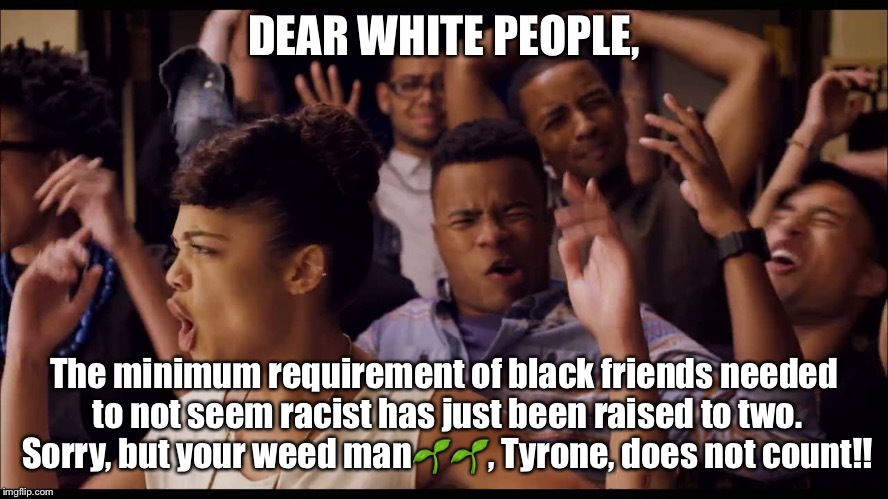 04. 2018
04. 2018
Larisa Tretyakova has been living in Rwanda for 14 years and teaches local children ballet at the only classical dance school in the whole country. For Rwanda, classical art is completely unfamiliar and unusual. But love for pointe shoes and Tchaikovsky's music breaks any boundaries
In 2003, Larisa's husband, an engineer, came to Rwanda to work on a contract with one of the major international companies. Larisa stayed at home with her little son. We decided: the husband will see what is happening there in this Africa, and will call them to him.
There was no fear, Larisa recalls. There was a childish interest - oh, Africa! When she asked her husband how it was, he answered somewhat evasively: "Well, white people also live." This answer did not alert the young woman, and she and her three-year-old son flew to her husband.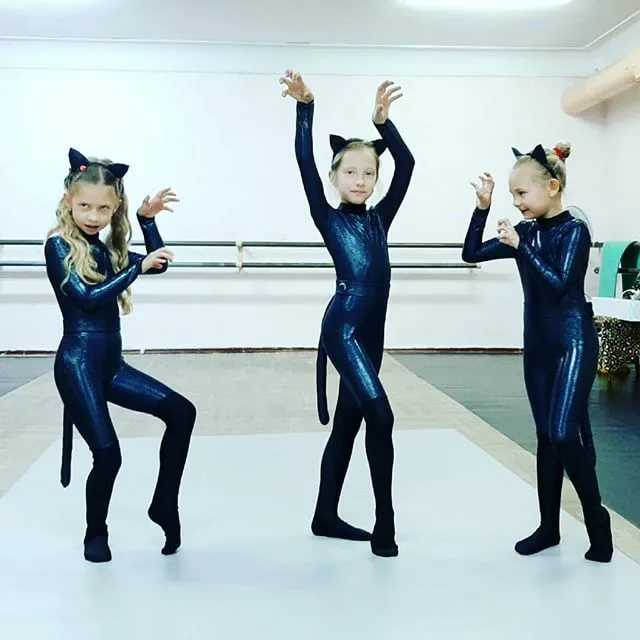 In place, children's romantic interest was blown away by the wind. The first impulse was to grab the child and drive back. Rwanda, survived in 19In 1994, a monstrous catastrophe - a civil war in which about a million civilians were killed in 100 days of genocide - still has not recovered from the post-war devastation. But the first impulse passed. We decided to stay for six months, to look around.
In place, children's romantic interest was blown away by the wind. The first impulse was to grab the child and drive back. Rwanda, survived in 19In 1994, a monstrous catastrophe - a civil war in which about a million civilians were killed in 100 days of genocide - still has not recovered from the post-war devastation. But the first impulse passed. We decided to stay for six months, to look around.
Without electricity, but with bananas
In the first year there was almost no electricity. Without a generator, there was nowhere to store food. Every day, Larisa had to go to the grocery store and cook in the morning. Then the electricity improved, problems with water began. Rainwater was collected in basins to wash the floor and flush it down the toilet. I really wanted to leave. But a year has passed. Then another. Then a daughter was born, and the son went to school. And the Tretyakovs realized that while they were busy with work and arranging their life, they had already missed the elementary school for their son in Russia. He did not know how to write in Russian, and it would be difficult for him to catch up with his peers. This is how the Tretyakovs have been living in Africa for 14 years. But the thoughts that "here the children will finish school, and we will return" still do not let go. nine0019
He did not know how to write in Russian, and it would be difficult for him to catch up with his peers. This is how the Tretyakovs have been living in Africa for 14 years. But the thoughts that "here the children will finish school, and we will return" still do not let go. nine0019
Over the years, life in Rwanda, and especially in its capital, Kigali, has changed a lot. The country is being rebuilt before our eyes. There were good roads, many new buildings, shops, hospitals. The cinema has recently opened. And although there are still a lot of poor people and poor areas, now Rwanda is the cleanest and most peaceful country in Africa, Larisa assures. Especially compared to neighboring Congo, where all the roadsides are littered with garbage.
Downtown Kigali, capital of Rwanda Photo: SteveRwandacommons.wikimedia.org nine0019
Rwanda is a mountainous and very green country with a comfortable climate: it never falls below +15 and above +32. Eucalyptus groves, forested mountain ranges, the famous picturesque Lake Kivu. There are 40 varieties of bananas growing in Rwanda. Everything is made from bananas - from alcohol to jewelry.
Eucalyptus groves, forested mountain ranges, the famous picturesque Lake Kivu. There are 40 varieties of bananas growing in Rwanda. Everything is made from bananas - from alcohol to jewelry.
The pace of life is measured, not fussy. After Russia, this slowness is especially felt. In Moscow and St. Petersburg, everyone is constantly running somewhere, in a hurry. In Rwanda, coming to a meeting fifteen minutes late means hurrying up. “When I come to Russia, the first days I always get into a mess,” Larisa laughs. - While I let everyone into the bus at the bus stop, the bus leaves. In Rwanda, you quickly lose the habit of pushing and rushing.” nine0019
Rwandans are very friendly. Whites are treated well, but a priori they are considered rich and are not averse to cheating on occasion. It happens that on the street, having heard Russian speech, those who once studied in the Soviet Union come up. Get to know each other and talk about yourself.
Food from a flower shop
At first, the Tretyakov family was very bothered by the monkeys, who climbed into the garden and stole everything that negligent owners left on the street.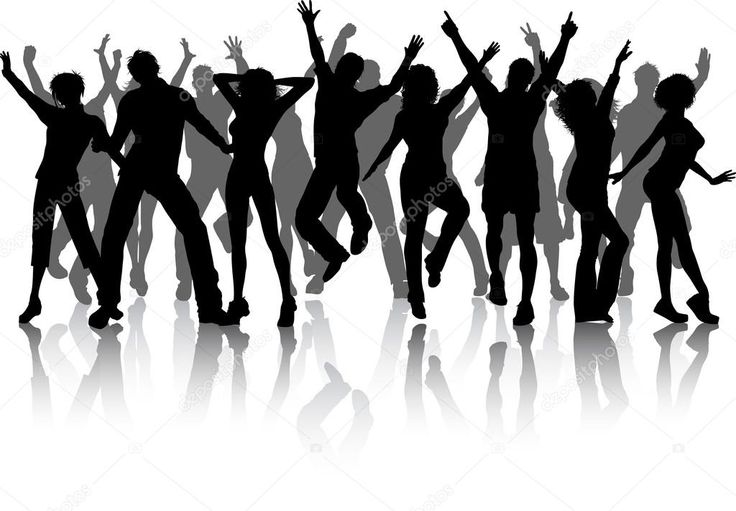 Near the house, Larisa and her husband started a vegetable garden, familiar to a Russian person. We planted greens, vegetables and sunflowers. When the flowers gained strength, one after another, someone began to savagely pluck and tear them to shreds. Watched - it turned out, a monkey. nine0019
Near the house, Larisa and her husband started a vegetable garden, familiar to a Russian person. We planted greens, vegetables and sunflowers. When the flowers gained strength, one after another, someone began to savagely pluck and tear them to shreds. Watched - it turned out, a monkey. nine0019
if the beef is tough, you need to lay the meat with papaya pieces, and after 15 minutes it will become tender and soft
In Rwanda, Larisa spends much more time than in Russia, she spends on cooking. Especially if you want to keep the usual table for a Russian person. There are no semi-finished products. If you want compote or jam - cook it yourself, salt, marinate, make sauces. There are almost no European products either. Cheeses, yoghurts, fish, sausages, ice cream and pastries familiar to Europeans are delivered to two small shops twice a week. There was a time when you had to bake bread yourself, but in recent years several bakeries have opened in the capital, and the problem with baking has been solved. The locals eat mostly vegetables and goat meat. Before coming to Rwanda, Larisa knew how to cook, but without fanfare and out of necessity. I started cooking seriously already in Kigali. I had to adapt to local products, learn local culinary secrets. nine0019
The locals eat mostly vegetables and goat meat. Before coming to Rwanda, Larisa knew how to cook, but without fanfare and out of necessity. I started cooking seriously already in Kigali. I had to adapt to local products, learn local culinary secrets. nine0019
Bananas and avocados at a market in Kigali Photo: Antoshananarivo/commons.wikimedia.org
In Africa, products familiar to Europeans are sometimes found in the most unexpected places. Once Larisa and her husband saw through the window of a flower shop a bouquet decorated with dill umbrellas. They came in and asked to buy "decorations" separately, without flowers. The seller was surprised and began to ask why. He categorically refused to believe in the answer “we will eat them”. “I had to buy a bouquet with a lot of dill decorations. We ran home, chopped dill into a salad, quickly pickled cucumbers and tomatoes with it, and began to look with interest towards flower shops. nine0019
Everyone to the machine
Sometime in the beginning of winter on Kigali street, Larisa saw a poster for The Nutcracker ballet. Ballet in Africa?! I must go and see, she decided. It was a performance by a non-professional dance school, which had been opened a couple of years earlier by an American Caroline. When Larisa came to sign up her five-year-old daughter for classes, she was asked if she danced herself. Larisa admitted that she used to teach dance. And she was immediately offered a job at the school. I did not want to work. But Larisa was asked to work with children for at least a couple of months. The children really wanted to dance, and the teacher returned to the USA at that time. And this “couple of months” has been going on for six years. nine0019
Ballet in Africa?! I must go and see, she decided. It was a performance by a non-professional dance school, which had been opened a couple of years earlier by an American Caroline. When Larisa came to sign up her five-year-old daughter for classes, she was asked if she danced herself. Larisa admitted that she used to teach dance. And she was immediately offered a job at the school. I did not want to work. But Larisa was asked to work with children for at least a couple of months. The children really wanted to dance, and the teacher returned to the USA at that time. And this “couple of months” has been going on for six years. nine0019
“A lesson at a ballet school costs about five to seven euros. For the rich and middle-class Rwandans, the price is affordable,” Larisa explains. “The school has many children from all over the world whose parents work in Rwanda.” Larisa has girls from America, France, Belgium, Serbia and Italy in her group.
The school is fully self-supporting. The money for classes goes to teachers' salaries, taxes, and the rent of halls. Part of the profit is accumulated to rent the venues for reporting concerts. There are few suitable sites, and they cost a lot of money. The school is managed by the parent committee: it solves financial issues, helps in organizing events. nine0019
The money for classes goes to teachers' salaries, taxes, and the rent of halls. Part of the profit is accumulated to rent the venues for reporting concerts. There are few suitable sites, and they cost a lot of money. The school is managed by the parent committee: it solves financial issues, helps in organizing events. nine0019
Last year, parents had an idea to select talented children from poor families and invite them to learn classical dance for free. Larisa, along with several students, went to classes at the Mindleaps center - this international organization helps children from the poorest families and those who are left without parents with education and social adaptation.
Larisa Tretyakova has been living in Rwanda for 14 years and teaching ballet to local children Photo: personal archive
If European mothers have one of the eternal motives for sending their children to do choreography is good posture, then Rwandans have no problems with posture, shoulder blades, or neck. They always wear something on their heads. nine0069 Larisa selected six - three boys and three girls from 13 to 17 years old. Since January, they have been studying together with everyone in the senior group. But the 17-year-old girl is only 142 centimeters tall. “Apparently they don’t eat well all their lives, therefore they are not tall,” Larisa believes.
They always wear something on their heads. nine0069 Larisa selected six - three boys and three girls from 13 to 17 years old. Since January, they have been studying together with everyone in the senior group. But the 17-year-old girl is only 142 centimeters tall. “Apparently they don’t eat well all their lives, therefore they are not tall,” Larisa believes.
According to Mindleaps, 82% of Rwandans live on less than $2 a day
Rwanda has very high taxes and duties. Expensive gasoline and transport. The poor areas of Kigali are far from the ballet school, the road costs two dollars. It is very expensive for poor families. And the school also bears these expenses. nine0019
Matches between the fingers
In class, Larisa teaches children the barre and adagio, the basis of classical dance, combining them with improvisation exercises. Temperamental Rwandans sour on a classic exercise. But without “tandyu” and “plié” in ballet, it’s still nowhere. So that the children do not get bored, Larisa indulges in various tricks. For example, he inserts matches between his fingers. During the exercises, you need to keep your hands in the correct position and not drop the matches. This makes it more fun. nine0019
For example, he inserts matches between his fingers. During the exercises, you need to keep your hands in the correct position and not drop the matches. This makes it more fun. nine0019
Somehow, during class, Larisa began to help a new Rwandan girl with her hands to turn her feet into the first position — she burst into tears. She decided that she was unhappy. The girls rushed to explain to her that ballerinas all walk like that. Have calmed down. Larisa thought that the girl would not come to the next lesson. Came. Fits. Smiling. “Madame, look, now I can do it too” - and she herself puts the feet in the first position.
Children in the classroom sorting out a package with clothes and pointe shoes - a gift to Rwandans from Grishko Photo: from personal archive
At first, everything scared the newcomers. There was a fear that rich children would not be accepted, that they needed to dance in a duet with white girls, and even that for some reason their legs were measured. But the anxiety passed quickly. Now the old-timers, on the contrary, are happy to play with the new ones, tell them how to wear ballet clothes, how to tie ballet flats.
But the anxiety passed quickly. Now the old-timers, on the contrary, are happy to play with the new ones, tell them how to wear ballet clothes, how to tie ballet flats.
At the duet class, you can see with what trepidation the boy clutched at the waist of his blonde partner. He almost doesn't let her move, but he holds on tight - he won't fall for sure. nine0019
After classes, the guys all breathlessly watch videos about how pointe shoes are made, how a tutu is sewn, videos from behind the scenes of a ballet theater, videos from rehearsals and lessons from professional ballet schools. The ultimate dream of all girls is a real tutu. And, of course, pointe shoes.
Priceless pointe shoes
All the girls in school dream of dancing on pointe shoes. But these pointe shoes in Rwanda still need to be obtained. There are no clothes or shoes for dancing in Rwanda. At all. Two years ago, RT was filming a film about post-war Rwanda. The film "From Genocide to Ballet" - about a country twenty years after a terrible catastrophe - was released in several languages. They also told about a small ballet school in Kigali - an island of classical art for locals. After the film, people from different countries wrote to the school, asking how they could help. “In the end, everything remained just talk, but in reality only ours responded,” Larisa says proudly. nine0019
They also told about a small ballet school in Kigali - an island of classical art for locals. After the film, people from different countries wrote to the school, asking how they could help. “In the end, everything remained just talk, but in reality only ours responded,” Larisa says proudly. nine0019
The Russian company Grishko (one of the world leaders in the production of dance clothes and shoes) responded. They wrote: “Ready to help, send a list of what you need.” Larisa made a list of the usual rehearsal clothes: leotards, leotards, ballet shoes, leggings, T-shirts, pointe shoes, simple rehearsal tutus.
Poor Rwandan children had nothing to do at all. It is very difficult and expensive to get tutus and pointe shoes in Rwanda
When the huge box finally arrived at the school and the children began to take it apart, the Rwandans were shocked. They couldn't believe that someone sent it all especially for them. Afraid to touch. Didn't know how to wear. What about shoes. After all, they walk barefoot most of their lives. They giggled and helped each other. They fiddled for a long time. nine0019
After all, they walk barefoot most of their lives. They giggled and helped each other. They fiddled for a long time. nine0019
And they came to the next lesson with a return gift. They brought a picture-collage, on which ballet dancers were pasted in various poses, obviously torn from some kind of calendar. “The picture was a little wrinkled, but it was so touching! Larisa smiles. — The girls from the group shed a tear. The picture hangs on the wall in our school.”
The first lessons on pointe shoes for unprepared feet, accustomed to running barefoot all their lives, is another test. Larisa shows a video on her phone: two Rwandan dark-skinned girls, clutching the machine with both hands, courageously stand on their toes and try to make the first steps. Chopin's music is playing in the background. One even almost manages to straighten her knees. “Torturing children is not a task, but pointe shoes are a cherished dream and a huge incentive to endure and learn,” Larisa explains. nine0019
nine0019
Before an open lesson at the center for children from poor families Mindleaps Photo: personal archive
Larisa asks to leave her pointe shoes at school after class. The fabric is very delicate, you can only practice on a clean floor, and getting new ones is very difficult. After a few classes, the girls come up: “Miss Larisa, can we take it with us once? We'll be careful." I ask: “Do you want to show at home?” - "Yes". They came to the next lesson proud."
The girls from the group sometimes order something online. With these parcels, then sheer tears and disappointment. Pointe shoes, which have been waiting for several months, do not fit. All parcels to Rwanda take a very long time, and they are expensive to clear through customs. The fee for the package from Grishko cost the school $200, although it arrived at the embassy address, and the school wrote letters that the package contained items for children from poor families. Did not help. The Russian Embassy in Rwanda also offered to help the ballet school. By the end of the school year, they promised to install additional mirrors in the hall and lay a special linoleum for dancing. Now the children are engaged on a slippery tiled floor. nine0019
Did not help. The Russian Embassy in Rwanda also offered to help the ballet school. By the end of the school year, they promised to install additional mirrors in the hall and lay a special linoleum for dancing. Now the children are engaged on a slippery tiled floor. nine0019
In charge of the ballet
It so happened that here, in Rwanda, Larisa is in charge of the entire Russian ballet. There is no right to be dishonored. “For them, Russia is equal to ballet. Therefore, they consider it an honor to study with a Russian teacher. It was amazing for me,” Larisa admits. But he keeps the brand. The whole school has one reporting concert at the end of the school year, Larisa's groups have it twice a year. “The kids are asking a lot,” she explains. But since the initiative is punishable, for an additional concert, all the costumes have to be sewn at your own expense. Once, for the Russian dance from The Nutcracker, the choreographer made twelve kokoshniks with her own hands. Sometimes, when there are a lot of costumes, she turns to the atelier.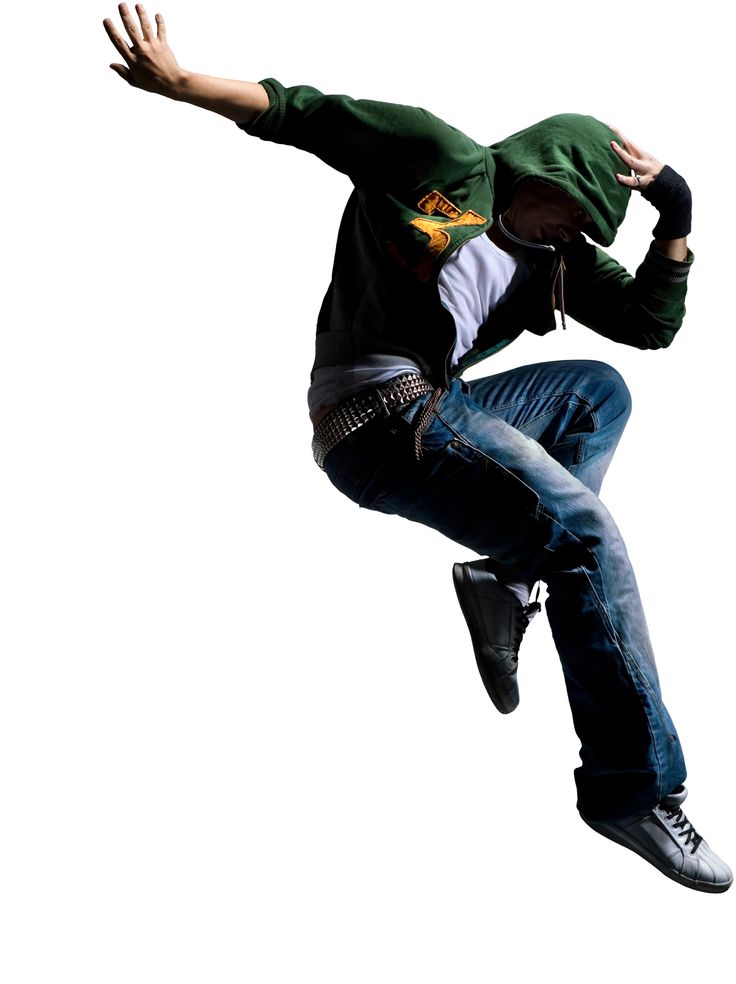 “Well, like an atelier,” Larisa laughs, “a dressmaker comes to school with a typewriter, that’s all the atelier.” Tutu-like skirts are sewn from a regular mosquito net. Then Larisa paints them and embroiders them with sequins. nine0019
“Well, like an atelier,” Larisa laughs, “a dressmaker comes to school with a typewriter, that’s all the atelier.” Tutu-like skirts are sewn from a regular mosquito net. Then Larisa paints them and embroiders them with sequins. nine0019
In class Photo: personal archive
In Russia, everyone is busy with their own business: the choreographer puts on a dance and rehearses, the costume designer is responsible for the costumes, the sound engineer is busy with music. In Rwanda, Larisa has to do everything herself. And it takes a lot of time and effort. Sometimes you run out of strength and you want to give up everything. Larisa tried to leave several times. I went to study at the university, and there was no more time. But the children began to write letters, come to her house, beg. And Larisa stayed. “When all these tears begin, “who are you leaving us to,” I feel sorry for them, and I can’t leave. Yes, and the results are pleasing, ”says Larisa. Last year, two girls, after classes with Larisa, entered a professional ballet school in the United States. nine0019
Last year, two girls, after classes with Larisa, entered a professional ballet school in the United States. nine0019
“I was thinking how to work less. But it doesn't work out halfway. This is already the cost of our Soviet ballet school - maximalism. If you have taken it, do it well and with high quality,” the choreographer laughs.
From every trip to Russia, Larisa brings sweets, seeds, gingerbread, buckwheat, flower honey and books to Rwanda. But the main wealth is a suitcase full of ballet accessories: pointe shoes, leggings, boleros, costume accessories and Inspiration chocolate with a ballerina on the packaging - this is already a ritual. “I see what they are interested in, they want to develop, and I understand that I can help them,” says Larisa. - It's important for me". In April, several more Rwandans from a school for the poor joined her group. nine0019
Do you want us to send you the best texts of "Such cases" to your e-mail? Subscribe to our weekly newsletter!
ballet education emigration
How to dance hip hop Online publication "Elements of Dance"
“People express themselves most truthfully in dance.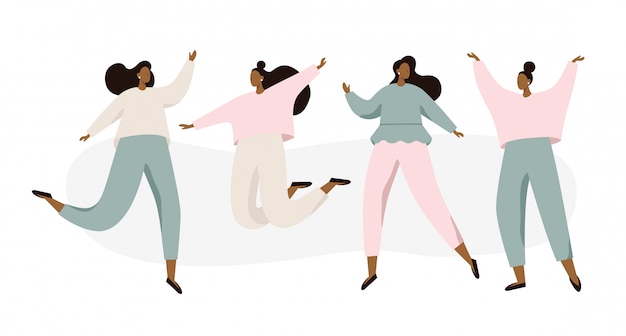 The body never lies."
The body never lies."
Ange deMille.
Alexander, tell us what hip-hop is?
- Hip-hop is a kind of youth culture. She showed up around 7pm.80s in America, among the working class, then spread throughout the world. This culture, like the rest, has its own style of music, dance, demeanor, slang, visual arts - graffiti. In general, this culture is more inherent in African Americans than white people, because they created it for themselves - this can be seen in the dance. Then, basically, there was breakdance - the performance of various acrobatic elements to the beat of the music. Later, new divisions appeared. Today hip-hop includes such directions as Poping , Locking , Weiveing , Power Muv , stylistics Afro-jazz , RAGGA-Dzhaza , such concepts as New Steel , , CRMP . Each style needs to be shown, seen, and then there will be a clear understanding of the division of these dance disciplines.
Each style needs to be shown, seen, and then there will be a clear understanding of the division of these dance disciplines.
How developed is modern dance in Russia?
- Now modern dances are highly developed, there are more than 150 dance studios and schools in Moscow alone. In Russia, modern choreography has been developed very strongly. A large number of international congresses are held by such large companies as Nike, Reebok and our federation, the all-Russian dance organization. Many dance teachers, trainers of world and European champions, etc. come here. nine0069 Also, peculiar championships, battles, various tours are held by federations, companies, clubs.
What does a beginner need to get into hip-hop?
- First you need to learn to listen to music, beats, rhythm, in order to start moving accordingly. It is necessary to learn the account on which the basic movements are laid out.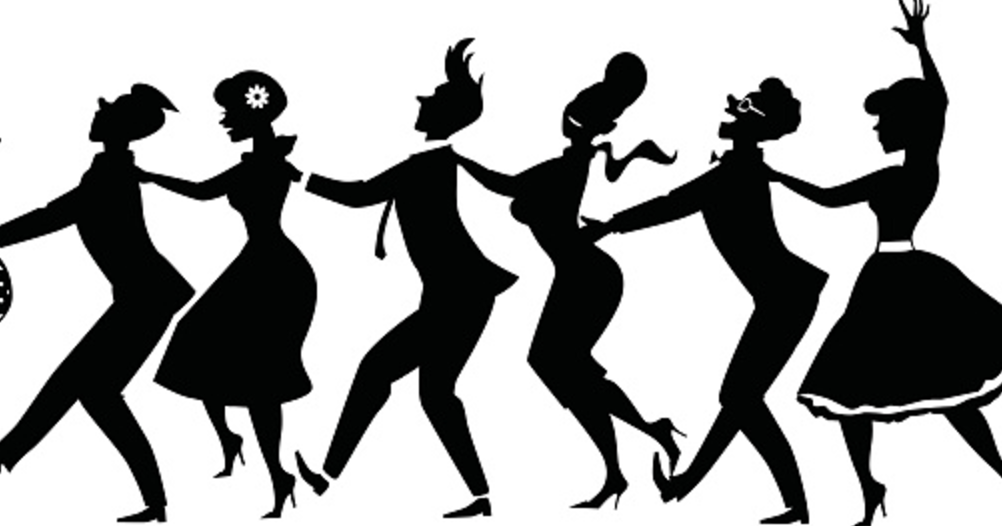 Then everything is superimposed on any tempo of the music.
Then everything is superimposed on any tempo of the music.
The main thing is to listen to music and put any choreography into account. nine0069 Also in each direction, there are certain basic movements. In hip-hop, this is a body swing, the so-called "kach" or a spring. When a dancer swings his body to the beat of the music, he begins to catch the music and do basic movements at the same time, here the whole body is working. Power loads are definitely needed, at first they are not difficult, but each time they must become more complicated and increase. It all starts with push-ups, in order to strengthen the arms, to feel where and how to fix the muscles. Also, stretching is mandatory - the muscles need not only to be pumped up, but also to be stretched a little so that they are more elastic, which also helps in the dance. nine0019
There are people who are embarrassed to go to hip-hop, what to do?
- Not necessarily 90-60-90. It doesn't matter what type of person you are. A dancer may be dense, but this in no way means that he is slow. I saw many people, both in Russia and abroad, who, with their physique, weighing more than a hundred kilograms, did things that people, roughly speaking, with a sports figure, cannot do at all. It all depends on the structure of a person, on his anatomy, predisposition, whether he can engage in this sport or not, as well as on his physical fitness. When a person comes, you need to look at what he is capable of. He may not be a super dancer in hip-hop, that is, for him it will be like a mandatory training program, for dancing. But, at the same time, a person will find himself in disco, be easy-going, learn to jump very high, and become the owner of an excellent stretch, and hip-hop is simply not his style. nine0069 Sometimes people come to practice modern dance, but find themselves in modern, modern jazz or classical. It all depends on the person, his structure, desire and readiness to understand where he came and why he needs it.
It doesn't matter what type of person you are. A dancer may be dense, but this in no way means that he is slow. I saw many people, both in Russia and abroad, who, with their physique, weighing more than a hundred kilograms, did things that people, roughly speaking, with a sports figure, cannot do at all. It all depends on the structure of a person, on his anatomy, predisposition, whether he can engage in this sport or not, as well as on his physical fitness. When a person comes, you need to look at what he is capable of. He may not be a super dancer in hip-hop, that is, for him it will be like a mandatory training program, for dancing. But, at the same time, a person will find himself in disco, be easy-going, learn to jump very high, and become the owner of an excellent stretch, and hip-hop is simply not his style. nine0069 Sometimes people come to practice modern dance, but find themselves in modern, modern jazz or classical. It all depends on the person, his structure, desire and readiness to understand where he came and why he needs it. It also depends on the teacher, how he will present everything - after all, this is a lot of laborious work, and not as it seems from the outside: a person came, he was shown how to dance hip hop, a park of movements and that's it. No, you need to explain that dance is not just a mechanical work of hands and feet, but also an understanding that a person is dancing. nine0019
It also depends on the teacher, how he will present everything - after all, this is a lot of laborious work, and not as it seems from the outside: a person came, he was shown how to dance hip hop, a park of movements and that's it. No, you need to explain that dance is not just a mechanical work of hands and feet, but also an understanding that a person is dancing. nine0019
Who is more willing to dance girls or young people and why?
- Girls go to dance from childhood, usually either ballroom or modern. The guys, in general, begin to practice already at a conscious age, when they understand everything, when they start to like it, they come to learn, and then show their skills. But still, there are more girls.
You can come to hip-hop absolutely at any age, there are no limits, boundaries, everyone is equal. On the example of our team, I can say that we have both the smallest (about five years old) and people who are over 30. On average, young people come at the age of 10-12. nine0019
On average, young people come at the age of 10-12. nine0019
How can a dancer develop?
- Look for something new for yourself, work with other teachers besides your coach, go to master classes. Let's say you like the style of Germany, you can go to Germany to study with top teachers.
To go to tournaments in Europe, the world, there to compete with the dance style of other countries, because each country has its own way of dancing. In Russia, hip-hop is well developed and we calmly compete with other countries. nine0069 The exchange of experience is very important for the development of a dancer.
You can learn to dance all the time, as Alexander says, on average, the preparation of a good professional dancer takes 5-7 years, but there is no limit to perfection. And sometimes it’s worth showing your ability to move your body at competitions. There are many hip-hop tournaments in Russia, both for beginners and masters.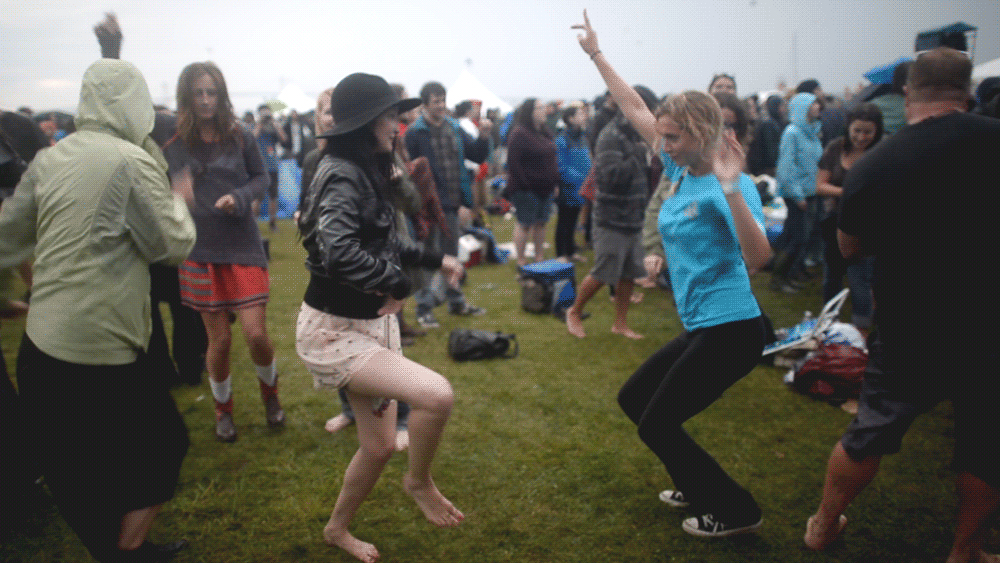
Alexander, tell me, how can a dancer competently prepare for a competition, especially if he is going to them for the first time? nine0032
- Competitions are a great psychological stress for any dancer, as well as for a teacher. The coach should brainstorm among his students who are going to the competition for the first time. It is necessary to explain that it is not so easy to perform in front of the audience and judges who will evaluate it, according to the evaluation criteria, in terms of complexity, technique, composition, clothing, and even a smile. In addition to him, there will be many dancers who will dance completely different movements, maybe even styles. nine0069 The main thing to remember is that you should not look at others and think that they dance better than you. Each has its own zest, and each judge has his own opinion, five judges - five opinions. Someone liked you, and someone else liked the dancer.
This is a very big psychological attack, especially for a little man, a child of six years old, it is very difficult and the coach should try to prepare him. To begin with, it’s worth inviting parents to classes, to the so-called “open lessons”, that is, the children will already be preparing, thinking that “Yeah, parents will come, so you need to be more responsible, dance better” to show what he really learned here and achieved in a certain amount of time. Then, it is imperative to do inside club competitions so that the kids learn to work in a team and compete with other children, their peers, so that they learn not to be afraid of this, not to be shy. And only after that it is already possible to take them to the competitive process of big events, maybe to the level near Moscow, the championships of Moscow, well, of course, for beginner dancers. nine0069 As for costumes, everyone chooses their own clothes, relying on the help of a coach. For starters, it should be very comfortable clothing that does not hinder movement, that is, tight jeans can interfere with someone, but for someone, on the contrary, they will feel more comfortable; the third cannot dance in jeans and dances in sweatpants, someone wears not sweatpants, but elongated shorts, like basketball shorts. All this is purely individual, and is selected for the stylization of the dance of a particular dancer. nine0069 Tip for beginners - hide your hands. Hands are the weakest point, so you should try to cover your hands with clothes to the wrist in order to slightly hide small flaws. Pants should be slightly loose, again, to hide any flaws in the knee joints.
All this is purely individual, and is selected for the stylization of the dance of a particular dancer. nine0069 Tip for beginners - hide your hands. Hands are the weakest point, so you should try to cover your hands with clothes to the wrist in order to slightly hide small flaws. Pants should be slightly loose, again, to hide any flaws in the knee joints.
How to behave on the floor? How to stand out among the crowd of dancers so that the judges notice you?
- It is the coach's job to prepare a person for the competition. When the coach considers that the dancer is ready, he puts him out, then the person comes to the competition, he is afraid of the size of the site, the number of people, no matter how he is prepared, there is still stress and will be present. Just further it needs to be prepared on the spot, orientated along the way. There is no need to stand at the edge of the court, because the judges, with a large number of people, try to cover everyone as much as possible, but again, if a person stands still and does not make any movements, he will be hardly noticeable. You need to try to get up somewhere in the middle. As for the costume, in order to stand out, you need bright colors: blue, blue, green, the costume can be pure white or with shades. Everyone prepares for this in advance to be noticed. Maybe the dancer will put on some kind of cap or a colorful, cheerful hat, maybe a hat with a pompom, or he will be in a hat with earflaps. When the person came out wearing a hat with earflaps, he had already attracted attention, and here it is, he has already earned himself a small bonus. These are chips that are thought out together with the coach in advance. nine0069 But still the main thing is how you dance. To go to the next rounds, a person must give all the best on the floor. First you need to listen to music, this is the biggest and main task for a dancer. Clearly dance to the music if he dances a pre-arranged pattern. If he dances improvisation, again getting into the music, into the rhythm. If he knows this melody, if possible, try to beat it with some musical tricks: where is the decay in the music, where is the sharp surge, that is, to know these things.
You need to try to get up somewhere in the middle. As for the costume, in order to stand out, you need bright colors: blue, blue, green, the costume can be pure white or with shades. Everyone prepares for this in advance to be noticed. Maybe the dancer will put on some kind of cap or a colorful, cheerful hat, maybe a hat with a pompom, or he will be in a hat with earflaps. When the person came out wearing a hat with earflaps, he had already attracted attention, and here it is, he has already earned himself a small bonus. These are chips that are thought out together with the coach in advance. nine0069 But still the main thing is how you dance. To go to the next rounds, a person must give all the best on the floor. First you need to listen to music, this is the biggest and main task for a dancer. Clearly dance to the music if he dances a pre-arranged pattern. If he dances improvisation, again getting into the music, into the rhythm. If he knows this melody, if possible, try to beat it with some musical tricks: where is the decay in the music, where is the sharp surge, that is, to know these things.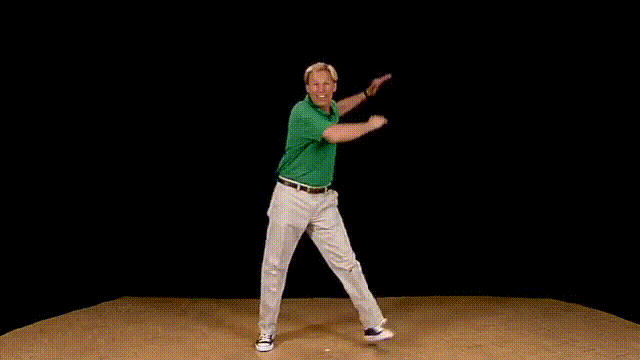 If a person dances a finished composition, then this is a clear good alignment of movements, well-honed movements with a base and, do not forget to smile. nine0019
If a person dances a finished composition, then this is a clear good alignment of movements, well-honed movements with a base and, do not forget to smile. nine0019
What are the judges' evaluation criteria?
- There is such a 3D system, that is, it is evaluated in three categories: technique, image and composition.
By technique, you evaluate the level of the dancer, how he performs this or that style.
In terms of composition, this is the complexity of the composition, its saturation, work in the stalls, work according to the level of height. A dancer can dance on half-bent legs, somewhere he dances high, somewhere he goes to the stalls, that is, this is all a composition. nine0069 And the image of a dancer - how he is dressed, how he looks, how he presents himself. That is, in a way, a person must show a certain performance in one minute.
Now everyone dances: someone dances slowly, someone dances fast, one dances well and the second is good, you look objectively, because there are many styles, you can’t stop at one thing.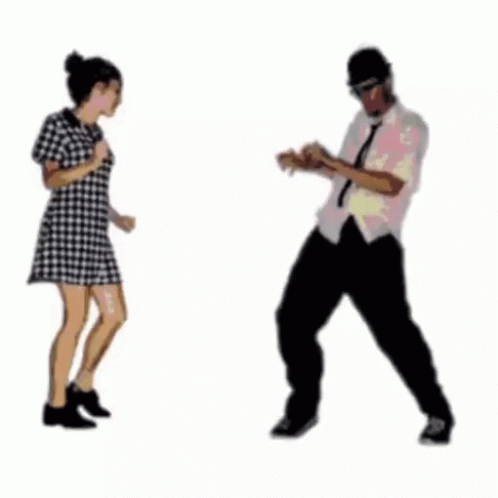 Someone is an adherent of the old styles, the so-called old school, someone, on the contrary, dances new school - new directions, more based on improvisation. nine0069 I can answer this: there is no limit to perfection, so there is room to strive, hip-hop does not stand still, it has always evolved and will continue to evolve, so the judge must attend various master classes to be always in the know, in the know, that is, he must to know what is fashionable now, what dance movements, what dance directions, to be a professional in your field, so that when a hundred people come out, and out of these hundred, he must determine that each dancer dances this or that style, this or that composition. And the dancer must show with his style one or another style, which he dances chosen by him and his coach, in order to clearly convey the direction that he shows. nine0019
Someone is an adherent of the old styles, the so-called old school, someone, on the contrary, dances new school - new directions, more based on improvisation. nine0069 I can answer this: there is no limit to perfection, so there is room to strive, hip-hop does not stand still, it has always evolved and will continue to evolve, so the judge must attend various master classes to be always in the know, in the know, that is, he must to know what is fashionable now, what dance movements, what dance directions, to be a professional in your field, so that when a hundred people come out, and out of these hundred, he must determine that each dancer dances this or that style, this or that composition. And the dancer must show with his style one or another style, which he dances chosen by him and his coach, in order to clearly convey the direction that he shows. nine0019
If a dancer, duo or small group disagrees with the judges' decision, what should they do?
- The number of judges is always odd, so that one vote always prevails. At the championships of Moscow - 5 judges, at large championships, for example, Russia - 7 judges. Seven judges - seven different opinions. No one can convince the judge to correct the mark, so the judge sees it that way. If the result is obtained on a person by disagreement, there is a chief judge at the competition, who is approached, either by a representative, or by the head of the team, and protests the decision of the judges in writing. There is a technical commissioner who can explain with the chief judge why it is so or not, that is, in principle, you can always analyze the performance of a team, a duet, a dancer. The judge must be competent in what he judges, the judge must be in the subject, he must really know what he evaluates. In my memory, there were very few such things, you can count them on your fingers, but they do happen. nine0019
At the championships of Moscow - 5 judges, at large championships, for example, Russia - 7 judges. Seven judges - seven different opinions. No one can convince the judge to correct the mark, so the judge sees it that way. If the result is obtained on a person by disagreement, there is a chief judge at the competition, who is approached, either by a representative, or by the head of the team, and protests the decision of the judges in writing. There is a technical commissioner who can explain with the chief judge why it is so or not, that is, in principle, you can always analyze the performance of a team, a duet, a dancer. The judge must be competent in what he judges, the judge must be in the subject, he must really know what he evaluates. In my memory, there were very few such things, you can count them on your fingers, but they do happen. nine0019
Who can't judge?
- A judge cannot judge his relatives, his family. My wife and sister are dancing here. When they go to the parquet, and I am in the lineup of judges, then the chief judge or technical commissioner, I ask for a replacement so that the refereeing is objective, and then there are no claims about biased refereeing. This is the ethics of the behavior of judges, a person should not judge his own. It's one thing when you have to judge the students of your team, in fact, there are not so many judges, and there are more and more participants every year, and willy-nilly, everyone is faced with judging their dancers. Naturally, their own are judged more severely, because they know that they dance, how they dance, and how it should be danced. nine0019
My wife and sister are dancing here. When they go to the parquet, and I am in the lineup of judges, then the chief judge or technical commissioner, I ask for a replacement so that the refereeing is objective, and then there are no claims about biased refereeing. This is the ethics of the behavior of judges, a person should not judge his own. It's one thing when you have to judge the students of your team, in fact, there are not so many judges, and there are more and more participants every year, and willy-nilly, everyone is faced with judging their dancers. Naturally, their own are judged more severely, because they know that they dance, how they dance, and how it should be danced. nine0019
Who is on the judging panel? Who becomes the judge?
- Lectures, seminars are held, at the end of training, there is an annual, mandatory examination for the judicial category. The categories of refereeing are different and depending on the level of the category, in terms of complexity, a person takes various tests and exams. As a judge, a person must clearly know the main directions, the beats of music, the rules of conduct for a judge on the site, the rules for holding competitions. The technical commissioner must know what is allowed in a given style or in a given age category for a dancer, and what is prohibited, so that he can clearly evaluate this dancer, so they learn in advance. Who wants to pass on judging, there is special literature, the provisions of the rules that are posted on the website of the federation, it is in general use and accessibility. A person learns all this and comes to take exams, and he is evaluated by the selection committee, which consists of: the president of the federation and the judicial committee of Russia, this is for Russia. At the international level, it is desirable to pass in English in order to be able to express themselves in the international language, respectively, a person must know all the terms in English. nine0019
As a judge, a person must clearly know the main directions, the beats of music, the rules of conduct for a judge on the site, the rules for holding competitions. The technical commissioner must know what is allowed in a given style or in a given age category for a dancer, and what is prohibited, so that he can clearly evaluate this dancer, so they learn in advance. Who wants to pass on judging, there is special literature, the provisions of the rules that are posted on the website of the federation, it is in general use and accessibility. A person learns all this and comes to take exams, and he is evaluated by the selection committee, which consists of: the president of the federation and the judicial committee of Russia, this is for Russia. At the international level, it is desirable to pass in English in order to be able to express themselves in the international language, respectively, a person must know all the terms in English. nine0019
What is dancing for you?
I enter the hall, close the door and find myself in a completely different world, in which there are no ordinary everyday problems. This is a kind of another dimension, another world, into which you enter again and again and get a lot of pleasure, a bunch of positive emotions, energy and a charge of vivacity for the rest of the time. Here you think about how to develop further on your own, share your experience, and so that as a result the kids will please with their victories. The student who does not want to be better than his coach is bad. I hope that my students in the future will grow up and dance better than us, will promote a healthy, fun lifestyle, modern dance culture and our team. nine0019
This is a kind of another dimension, another world, into which you enter again and again and get a lot of pleasure, a bunch of positive emotions, energy and a charge of vivacity for the rest of the time. Here you think about how to develop further on your own, share your experience, and so that as a result the kids will please with their victories. The student who does not want to be better than his coach is bad. I hope that my students in the future will grow up and dance better than us, will promote a healthy, fun lifestyle, modern dance culture and our team. nine0019
Do you have any wishes for current and future dancers?
- More to the people who are in charge - to the government: pay more attention to children's sports, youth movements, do not hesitate to invest in them. Youth policy should be developed without drugs, without alcohol.
And all the dancers of light parquet and good luck in life!
For a long time, hip-hop has not lost its individuality. He contributed to the emergence of new directions and is constantly evolving himself, capturing more and more supporters. nine0069 Modern dance is a dance for everyone, here anyone can find what he likes. And the world of hip-hop is all the more unique, because age, gender and skin color are not important for it. The main thing is the desire to strive for something new. Choose, do not be afraid and dance!
He contributed to the emergence of new directions and is constantly evolving himself, capturing more and more supporters. nine0069 Modern dance is a dance for everyone, here anyone can find what he likes. And the world of hip-hop is all the more unique, because age, gender and skin color are not important for it. The main thing is the desire to strive for something new. Choose, do not be afraid and dance!
Lilia Shapovalova
Alexander kindly agreed to also briefly tell about each direction:
Popping - these are accented movements with a hard stop, fixation according to the music. The choreography is peculiar: rigid, based on the anatomy of the body. Each joint must work separately. The dancer must fully feel and control his body, tense and relax the necessary parts of the body in turn in order to place accents to achieve the desired effect, entertainment. nine0069 Locking - comes from a break - a rather dynamic style, it is difficult to describe it, this one must be seen. In general, these are rotational movements of the hands, elbow joints.
nine0069 Locking - comes from a break - a rather dynamic style, it is difficult to describe it, this one must be seen. In general, these are rotational movements of the hands, elbow joints.
Waving - smooth, wave movements, not only with hands, but with all parts of the body. Everything is based on plastic.
Power move - a concept borrowed from the break - power loads on the muscles, power movements. These can be push-ups, a handstand with push-ups, some transitions to freuds, that is, to stop movements upside down using hands (stand on one hand, and the other can be taken on the foot). nine0069 Afro-jazz is a shaking of the lower parts of the body, the hip, sometimes the upper, that is, the work of the body, sometimes all together. Fast, to the beat of music, movements. It looks very nice, but you need to own it, not everyone can repeat it.
Ragga jazz has a more relaxed style, confident.

